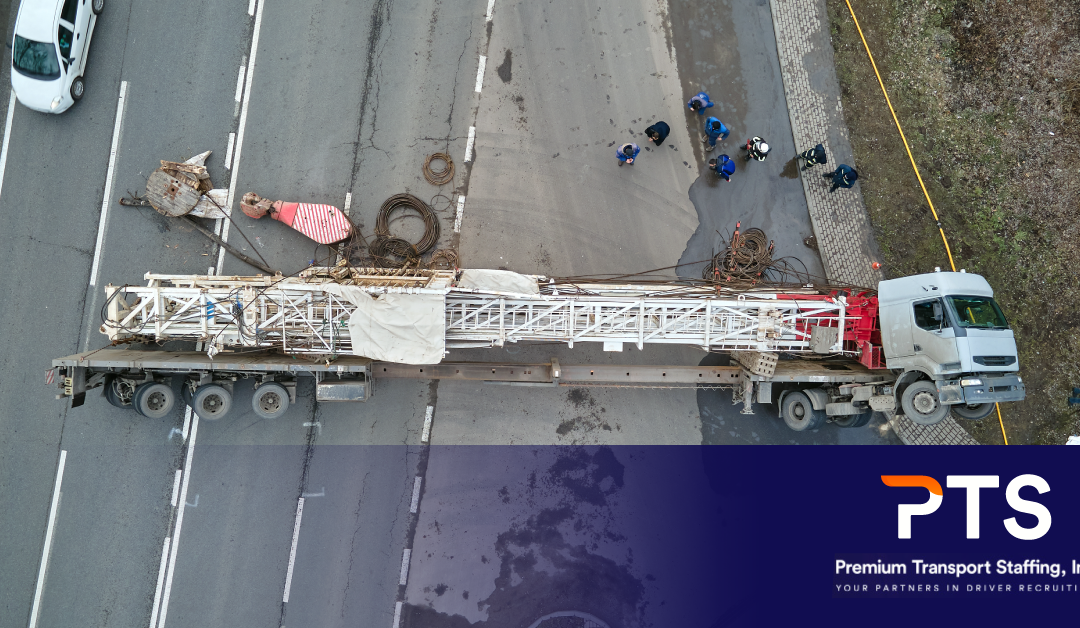A jackknife slide is one of the scariest – and most dangerous – events a truck driver can face. During a jackknife slide, the cab swings to the side, positioning it at a 90-degree angle to the trailer. That makes the entire vehicle harder to control, leading to collisions, coming off the roadway, trailer tipping, and more.
While jackknife skids are most common in snowy conditions, any challenging road conditions, including ice, heavy rain, and some spills, can potentially lead to a jackknife slide. A critical part of trucking safety is knowing how to handle a jackknife slide if one starts occurring. Here’s an overview of what to do.
Remain Calm at All Times
When a truck starts to jackknife, anxiety usually spikes. However, it’s critical to remain as calm as possible. Otherwise, you may have trouble assessing your environment and making logical decisions to correct the skid.
Don’t Slam on the Breaks
During a jackknife skid, your initial instinct may tell you to hit the brakes hard to stop the truck. However, hard braking can make the vehicle more difficult to control and could increase your odds of an accident.
Instead, take your feet off of the pedals. Don’t accelerate or brake while the truck is sliding. Instead, allow its current momentum to give you the power you need to correct and the natural deceleration to slow you down at the beginning.
Carefully Steer into the Skid
If your truck is entering a jackknife slide, you must steer into the skid to regain proper alignment. This means turning the front wheels to match up with the direction the trailer is sliding. For example, if the head of the trailer is shifting to the left, turn the steering wheel toward the left to compensate.
When you adjust the steering, don’t jerk the wheel. That can cause an overcorrection which may make a difficult situation worse. Instead, turn the wheel in a smooth, controlled manner. That allows you to observe the realignment as it occurs, allowing you to recenter at the right time. If you do overcorrect, gradually move the wheel in the other direction to balance it out.
Gently Brake Once You’re Realigning Correctly
Once the truck and trailer are realigning correctly, you can gently brake or use the jake brake for additional deceleration and gain more control. The best approach usually depends on your unique situation, so use your experience as a guide.
Tap the Gas to End the Slide
After you’re fully realigned, tap the gas pedal a few times to see if you’ve regained traction. Pause for a moment between taps to assess the feel of the vehicle on the road. If you’re still sliding, take your foot off of the pedal and wait before trying again. If not, you can drive the vehicle carefully until you can pull over.
Pull Over on the Side of the Road or Exit the Roadway for a Break
After you recover from the jackknife slide, pull over on a safe spot on the side of the road or exit the roadway and head to an appropriate location, such as a truck stop. A jackknife skid will get your adrenaline pumping, so it’s wise to take a break to recenter yourself before continuing on toward your destination. Plus, that gives you a chance to inspect your vehicle, ensuring your tires and other parts of the truck weren’t damaged along the way.
PTS® Makes Your Safety Our Priority
Ultimately, knowing how to handle a jackknife slide is a crucial part of trucking safety. If you’d like to learn more about how to remain safe on the road or are looking for new truck driver jobs, PTS® wants to hear from you. Contact us today.


Recent Comments